Introduction: The Expanding Youth Football Sock Market
The youth football sock market has shifted from offering simple basics to delivering high-performance, team-ready gear. Today’s youth socks often include features like moisture-wicking yarns, arch compression, and targeted cushioning—similar to professional-level adult products. As parents, schools, and youth teams invest more in quality sportswear, demand for specialized socks continues to rise.
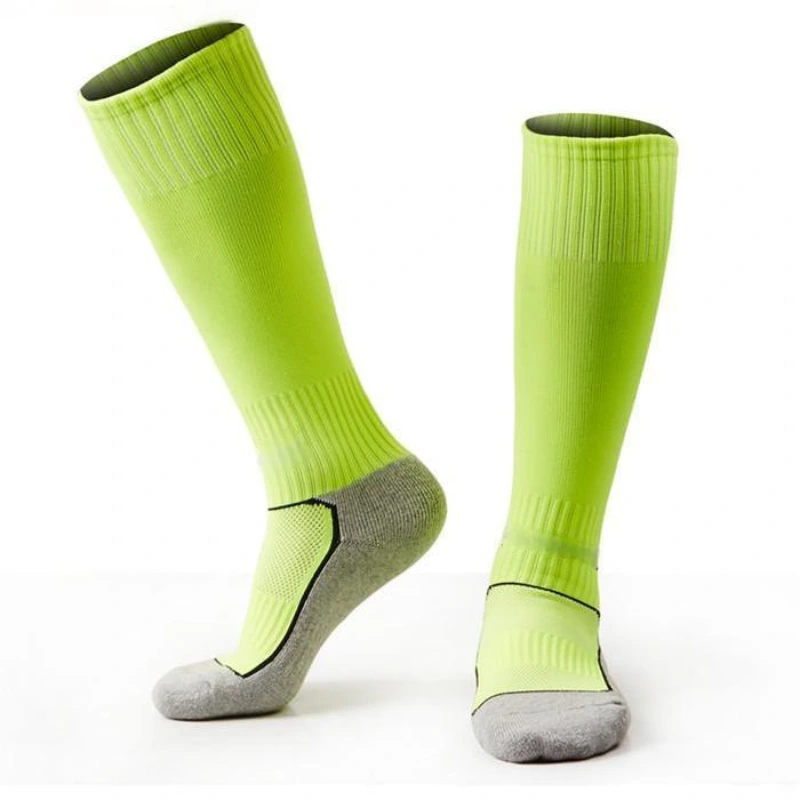
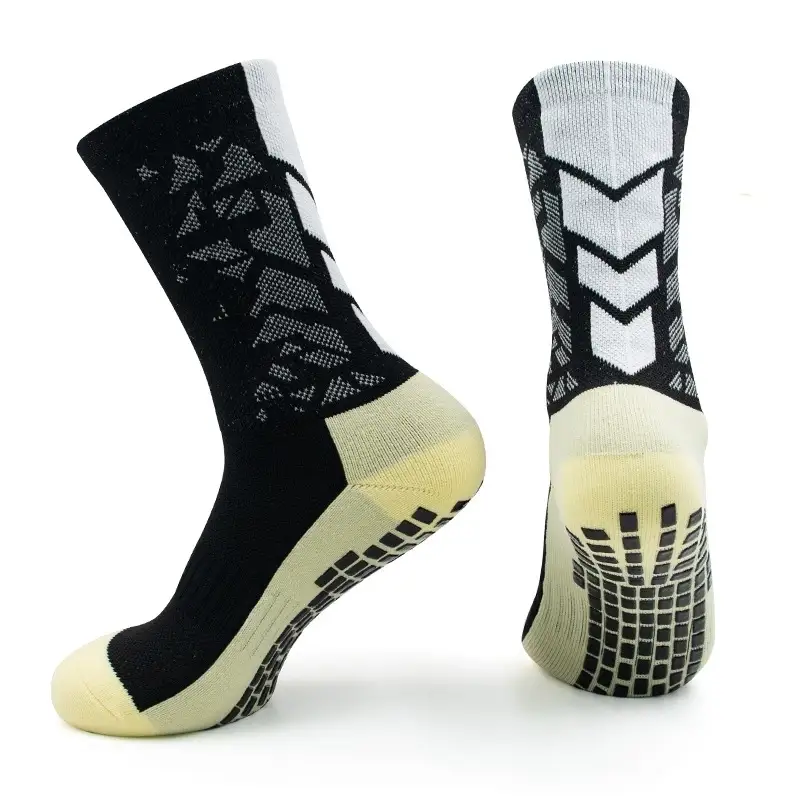
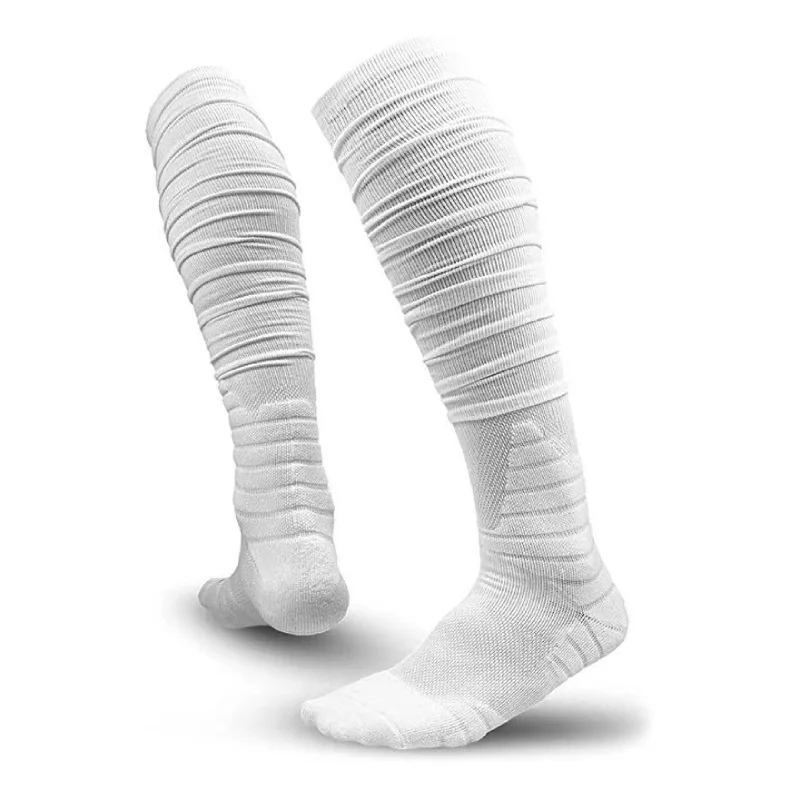
This presents a strong opportunity for manufacturers. But serving the youth segment isn’t just about scaling down adult products. It requires understanding specific sizing needs, school or club color requirements, and production adjustments for smaller batch orders. Retailers and leagues also expect fast turnaround and flexibility with custom designs.
For factories that can manage customization efficiently, maintain consistent quality, and offer stable lead times, the youth segment offers room for growth. This guide outlines key manufacturing factors—from size specifications and material choices to production flow and packaging—that influence your ability to compete in the youth football sock space. It’s designed to help both new entrants and experienced manufacturers strengthen their approach and gain a foothold in this fast-moving market.
Market Analysis: Understanding the Youth Football Sock Segment
Before expanding production, manufacturers need to understand how the youth football sock market functions. This includes reviewing demand cycles, competition, and how products reach end users. Recent shifts toward team customization and performance materials create new supply needs.
Demand Outlook and Segment Growth
The youth football sock market is valued at around $420 million annually, with a 5.7% projected growth rate through 2028. Key drivers include rising youth sports participation, uniform standardization, and growing attention to comfort and performance. North America and parts of Asia show rapid growth, while Europe maintains steady demand with higher per-player spending. Seasonality matters—orders spike 6–10 weeks before major youth football seasons. The youth segment accounts for about 35% of total volume but only 28% of market value, signaling room for premiumization and functional product upgrades.
Competitive Landscape and Distribution Models
The youth football sock market includes both specialized factories focused on team sports and major sportswear brands with broader product lines. Competition is most intense in the mid-tier and value-focused segments, where performance features and team customization drive buyer decisions. Instead of relying on fixed pricing, most manufacturers now offer volume-based quotations tailored to specific project requirements. Distribution models vary widely: team dealers typically require 30–40% profit margins, while larger retail chains often expect 45–55%. Selling directly to teams allows for greater margin control but demands more investment in sales and customer service. Meanwhile, private label manufacturing is seeing strong growth, particularly among organizations seeking tailored team gear with branding flexibility. Understanding these dynamics helps manufacturers prioritize the right channels and match production strategies with market expectations.
Size Range Planning: Optimizing for Youth Markets
Smart sizing is essential in youth football sock manufacturing. It influences not only fit and comfort but also production efficiency, inventory management, and order flexibility.
Age-Based Sizing Systems
Youth sock sizing typically spans 4–6 size brackets, covering ages 5 to 16. North American systems use terms like Youth S/M/L, while European formats often label by age. However, size standards aren’t always consistent across regions. That’s why manufacturers need precise specifications for foot length, ankle circumference, and leg height. When serving international markets, size conversion charts are a must. Collecting anthropometric data from real players helps ensure fit accuracy and reduces product returns or redesigns later. Pre-launch fit testing on youth athletes across the full size range is highly recommended.
Managing Inventory and Size Curves
Youth sizes follow a predictable demand curve. Middle sizes (ages 8–12) usually account for 60–70% of total volume. Small and large sizes together make up the remaining 30–40%. To stay efficient, manufacturers can adjust production runs based on this curve—prioritizing volume for middle sizes and producing edge sizes in smaller batches. Offering tiered MOQs (e.g., lower minimums for less common sizes) helps distribution partners stock accurately. Sharing recommended size curves and providing restock flexibility can also prevent size gaps or slow-moving inventory. These adjustments make it easier for team dealers and retailers to meet demand without overstocking or running out of key sizes.
Material Selection: Performance Requirements for Youth Players
Choosing the right materials for youth football socks is vital for balancing performance, durability, and cost. Youth players have distinct needs that differ from adults, requiring careful fabric decisions.
Fabric Composition
Youth football socks typically use blended fabrics to meet comfort and durability demands. Common blends include polyester (50-70%), nylon (15-30%), cotton (0-20%), and elastane/spandex (3-8%). Polyester offers moisture-wicking and durability, essential for active play. Nylon reinforces high-wear areas like heels and toes. Cotton adds softness, helping players with sensitive skin. Elastane ensures stretch and recovery, allowing flexibility for movement and growth. Fabric weight usually ranges from 160 to 200 GSM, with slightly heavier materials preferred for added durability despite minor breathability trade-offs. Antimicrobial finishes are common to reduce odor, especially given youth players’ inconsistent washing habits, but treatments must meet safety standards for children. Material costs affect production budgets significantly, often accounting for 20-35% of total cost, which is critical in the price-sensitive youth segment.
Durability and Growth Considerations
Youth players tend to be less careful, so reinforced areas on heels, toes, and ankle zones extend sock lifespan. Reinforcements must avoid discomfort or pressure points. Growth accommodation is unique for youth socks—higher elastane content (5-8%) and stretch panels help socks adapt as players grow during the season. Some brands design slightly oversized socks or use graduated sizing to allow wear over longer periods. Fit remains crucial; loose socks risk bunching and blisters. Quality testing includes enhanced stretch recovery, abrasion resistance, and colorfastness under harsh washing, simulating real-life youth use conditions.
Production Processes: Manufacturing Efficiency for Youth Lines
Efficient production is key to competitive pricing and consistent quality in the youth football sock market. Proper planning reduces costs while meeting the demands of this price-sensitive segment.
Production Line Configuration
Youth sock production differs from adult lines due to smaller sizes requiring specific machine setups. Needle counts and cylinder diameters must match reduced sock circumferences to maintain fabric density and performance. Running dedicated youth production batches is more efficient than mixing sizes, as frequent machine adjustments reduce throughput. Grouping youth runs typically boosts efficiency by 15–25%. Quality control must adjust inspection criteria for smaller tolerances typical of youth products. For manufacturers with sufficient volume, dedicated youth lines ensure steady flow and fewer changeovers. Production schedules should align with seasonal demand peaks—usually 3–5 months before the youth football season—to avoid delays and support smooth distribution.
Packaging and Presentation
Youth sock packaging focuses on team needs and visual appeal. Bulk packaging by size simplifies team distribution and cuts packaging costs. Clear size labels help coaches quickly identify correct pairs. For retail, colorful, youth-friendly designs that highlight performance features appeal both to young players and parents who often make purchase decisions. Sustainability is increasingly important; many buyers prefer minimal or recyclable packaging. Reducing packaging material by 30–50% lowers costs and supports eco-friendly positioning. Premium youth lines benefit from hang tags or inserts explaining care instructions and product benefits, enhancing perceived value and encouraging longer product life through proper use.
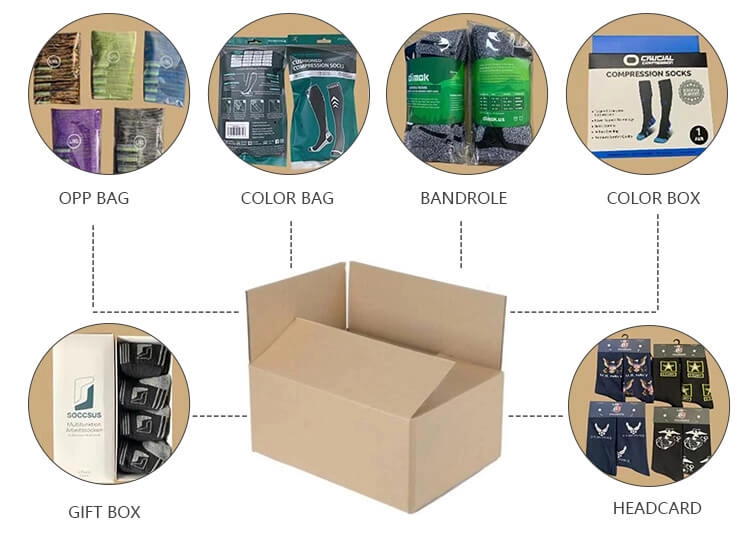
Customization Capabilities: Meeting Team and League Requirements
Offering customization is a key differentiator in youth football socks. Efficiently balancing design flexibility with production efficiency helps manufacturers serve teams, leagues, and schools with tailored solutions.
Team Color and Design Customization
Team identity extends to sock color and pattern. To deliver consistent hues, use standardized color systems (like Pantone) and maintain a palette of pre-dyed yarns in popular team shades. Alternatively, on-demand dyeing reduces inventory needs but may slightly extend lead times. Design variations—stripes, panels, or contrast heels—are streamlined using digital knitting technology when available; otherwise, standardizing a set of customizable elements (fixed stripe widths or panel layouts) allows visual variety without frequent machine reprogramming. MOQ for single-color or single-size custom socks is typically 500 pairs. Some stock designs allow mixed colors and sizes at the same MOQ.
Logo Application and Team Branding
Adding logos boosts perceived value and cements team branding. Common methods include:
- Knit-in Logos: Durable and integrated, requiring digital knitting setups and an MOQ often aligned with size/color requirements.
- Embroidery: Offers dimensional texture with moderate setup needs; MOQ generally starts at standard levels.
- Heat-Transfer or Printing: Delivers full-color flexibility and lower setup thresholds, with durability suited for light wash cycles.
Hybrid approaches—stock socks in team colors paired with logo applications—provide a branded look while minimizing full custom runs.
For precise lead times, cost estimates, and guidance on MOQ flexibility, please contact us via our website. Our team will help tailor a customization plan that aligns with your production schedule, design needs, and budget considerations.
Quality Standards: Ensuring Performance for Young Athletes
Maintaining high-quality standards tailored to youth football socks is vital for manufacturers serving this market. Youth products face unique demands compared to adult socks, requiring specific testing and fit considerations.
Performance Testing for Youth Socks
Youth football socks undergo rigorous testing to ensure durability and comfort. Durability tests typically require 25-30% more wash cycles than adult socks, reflecting the active use and often less gentle care by young players. Stretch and recovery tests verify that socks retain their shape, with an acceptable recovery rate within 8% of original dimensions—slightly more flexible than adult standards. Moisture management testing checks for effective sweat wicking and quick drying, crucial for younger athletes’ comfort. Safety is a priority: all dyes and treatments must meet strict standards for skin contact in children’s products, avoiding allergens and irritants. Regular quality checks during production—not just pre-launch—help maintain consistent standards and support customer trust.
Fit Consistency and Growth Adaptation
Youth sizing is more complex due to wide variation in foot and leg sizes within age groups and the need to accommodate growth. Manufacturers develop detailed size specifications including foot length, circumference, ankle, calf, and leg height, allowing tolerances of ±5-8% to balance fit and production feasibility. Compression elements in youth socks are milder than adult versions to suit developing bodies. Fit testing covers diverse youth body types to ensure consistency. Some brands add subtle fit indicators inside socks to alert parents when a size upgrade is needed, improving user experience and encouraging repeat purchases. For global markets, size adjustments and correlation charts help partners stock appropriate inventories across regions.
Cost Management: Optimizing Production Economics
In youth football sock manufacturing, cost control directly affects margin. Given price sensitivity in youth segments, careful planning of materials and production processes is essential.
Material Strategy and Supplier Management
Raw materials make up 35–50% of total unit cost. To keep this in check, manufacturers should work with multiple trusted suppliers to gain flexibility and pricing power. Bulk purchasing agreements with volume guarantees can reduce unit cost by 5–15%. Zoned construction is another tactic: placing premium yarns only in high-wear areas while using budget-friendly fibers elsewhere. This can cut material usage by up to 12% without sacrificing performance. Regular testing of alternative yarns and grips helps identify lower-cost substitutes that still meet durability and comfort standards. For factories with high volumes, partial vertical integration—such as in-house yarn blending—can reduce long-term costs. Just-in-time inventory strategies can also lower warehousing expenses, provided raw material supply is reliable.
Production Efficiency and Scale
Batching production for best-selling youth sizes and popular colors reduces setup time and waste. This alone can improve productivity by 15–20%. Sharing knitting machines between youth and adult lines (with size-specific programming) further spreads overhead. Automated packaging and visual inspection can reduce manual labor costs while maintaining quality. Maintenance routines that reduce machine downtime are essential for consistent output. Energy-saving systems for air compressors, boilers, and lighting can cut facility costs by up to 25%. If manufacturing occurs across locations, centralizing youth sock production in the most specialized facility helps reduce complexity and error.
Distribution Strategy: Reaching Youth Football Markets
To succeed in the youth football sock segment, manufacturers need a targeted and flexible distribution strategy. The right approach depends on your production scale, price positioning, and the type of customer you’re trying to reach.
Selling to Teams and Leagues
Direct sales to youth football teams offer better margins and long-term relationships. However, each organization has its own structure. Schools often involve athletic directors or purchasing departments. Clubs are usually run by coaches or parent committees. Leagues might rely on board members or equipment managers. Timing matters—budgets are usually decided 2–4 months before the season. Your outreach must match that schedule. Tailored proposals that address fit, comfort, color-matching, and reorder ease are more likely to get approval.
For manufacturers without in-house sales teams, working with team dealers is a viable route. Dealers already have established relationships but typically expect a 30–40% margin. They also require strong product support, like sales kits and inventory guarantees. Many factories use both methods—handling large team accounts directly and assigning smaller clients to trusted dealers. This hybrid model works well if channel conflicts are managed carefully.
Expanding Through Retail and Online Channels
Retailers and online stores provide reach and brand awareness. Sporting goods stores demand high margins (up to 55%) and strict packaging and shipping requirements. Big box stores prioritize entry-level socks and large orders. Specialty retailers handle premium styles but move lower volumes.
Direct-to-consumer e-commerce works well for reaching parents. Digital ads targeting search terms like “youth football socks” during back-to-school season are effective. Some manufacturers also build custom team ordering portals—parents order online, but the socks still match team colors and sizes. This combines team sales with e-commerce convenience.
Marketing Support: Driving Demand and Differentiation
Effective marketing is key to driving youth football sock sales, especially in a crowded and price-sensitive market. Manufacturers that support their partners with the right tools and outreach strategies can strengthen their brand while helping distributors close more deals.
Targeting Teams and Leagues
Sales to youth organizations depend on trust, clarity, and added value. Providing spec sheets, performance comparisons, and product samples helps coaches and equipment managers understand the benefits and feel the difference. For leagues, offering bulk pricing tiers, custom design services, and optional sponsorships can make a strong case for switching vendors. Some manufacturers also build relationships through ambassador programs—offering discounts or custom features to influential teams in exchange for testimonials or use in marketing. Sponsoring tournaments is another route to boost visibility among multiple teams at once, especially when timed during pre-season periods. For deeper engagement, educational content on injury prevention or sock performance can demonstrate expertise and build long-term credibility with decision-makers.
Reaching Parents and Players
Even though teams make the final purchase, parents and players often influence the decision. A well-timed digital campaign—especially around back-to-sport periods—can create interest before organizations place orders. Parents care about durability, comfort, and value. Players notice design and fit. Messaging should appeal to both. Sharing short videos showing how the socks perform on the field helps build trust. Social media posts featuring real young athletes also work well—if done appropriately. Where possible, connecting the product to professional inspiration (like national team styles or pro-level features) taps into player enthusiasm, encouraging requests that influence team purchases.
Conclusion: Strategic Positioning in the Youth Football Sock Market
Success in youth football sock manufacturing requires strategic alignment of production capabilities, product features, and distribution approaches with specific target market segments. Manufacturers must make deliberate choices regarding quality levels, customization capabilities, and service offerings based on their operational strengths and market opportunities rather than attempting to serve all segments equally. Those targeting premium youth programs must invest in advanced materials, growth-accommodating designs, and comprehensive customization capabilities that support team identity while justifying higher price points. Manufacturers focusing on league and school channels should develop efficient production processes and support programs that address the specific needs of organizational purchasers, including simplified ordering systems and inventory management assistance. For those pursuing volume opportunities through retail channels, production efficiency and consistent quality at competitive price points become paramount considerations.
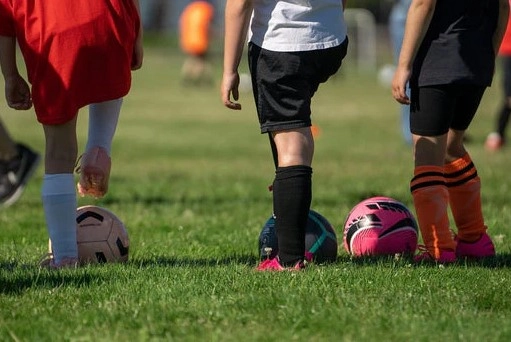
Regardless of specific market focus, understanding the unique requirements of youth football products provides the foundation for sustainable success in this growing product category. Implementing appropriate quality standards, optimizing production processes for youth-specific considerations, and developing marketing approaches that address the multiple decision-makers in youth sports equipment purchases enables manufacturers to deliver products that meet the needs of young athletes while building profitable business relationships throughout the youth football ecosystem.
FAQ: Common Questions About Youth Football Sock Manufacturing
What is the MOQ for custom youth football socks?
Standard MOQs start at 500 pairs per color and size. Some stock-based models allow mixed sizes/colors for a 500-pair total. Contact us for specific requirements based on design and material.
How do size distributions typically break down?
Orders usually follow a bell curve: 15–20% small, 60–70% medium sizes, and 15–20% large. Adjustments depend on team age and region.
What performance features matter most?
Durability, moisture-wicking, snug fit, and consistent sizing are essential. Teams also value cushioning, compression zones, and odor control.
What’s the production lead time?
Lead times range from 2–6 weeks depending on customization level. Fully custom designs take longer. Peak seasons may add delays.
How can manufacturers assist with inventory management?
We offer recommended size curves, restock options for popular sizes, and flexible ordering. Custom programs help avoid overstock or shortages.
